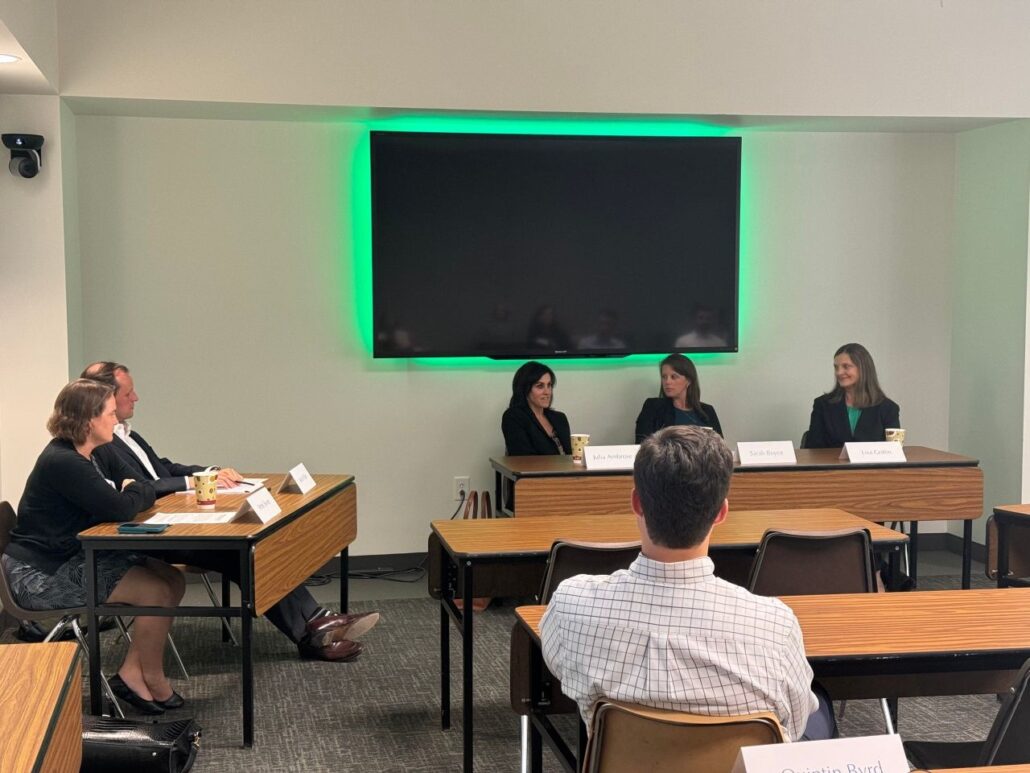A Panel of O’Connor Clerks Share Her Legacy With NCBA Members
“I like a woman who’s not afraid to go after what she wants.” That is why Justice O’Connor hired Sarah Boyce to clerk for her in 2015. As a retired justice, Justice O’Connor could only hire one clerk per year. Sarah had applied for this clerkship and was preparing for an interview only to find out that Justice O’Connor had already hired a clerk for that year. She went to the interview anyway, but as the interview was ending, she decided to address the elephant in the room. “Justice O’Connor, I heard that you have already hired a clerk for this coming term; I want you to know that I am willing to work for you anytime.” Justice O’Connor respected her perseverance and offered her a clerkship for a later year.
On August 29, the NCBA Appellate Section had a panel discussion to celebrate Justice O’Connor’s memory. Three O’Connor clerks, Julia Ambrose (1995), Lisa Griffin (1997), and Sarah Boyce (2015) served as panelists. Julia Ambrose is a partner at Brooks Pierce with specialties in transactional and regulatory work. Lisa Griffin is a constitutional and criminal law professor at Duke University School of Law. Sarah Boyce is the North Carolina Deputy Attorney General and General Counsel.

Julia Ambrose, Lisa Griffin and Sarah Boyce are seated left to right in front of the room. The three panelists spoke at the discussion held on August 29. Pictured on the left are Amie Sivon, partner at Ragsdale Liggett and Appellate Practice Council Chair, and Mark Hiller, litigation attorney at Robinson Bradshaw and former law clerk for Justice Sotomayor. Hiller served as the moderator for the panel.
The panel shared about what it was like to clerk for Justice O’Connor. On Saturday sessions, Justice O’Connor talked about cases with her clerks. She wanted everyone’s opinion and provided opportunities to hear all sides. Sometimes, she would even assign a clerk to argue one side of a case. But once she made a decision, she was done. No one was ever confused – at least not twice – about who was justice and who was the clerk.
Justice O’Connor was frugal with her praise. The law clerks had a photocopy of Justice O’Connor’s hand taped to the wall. A sign next to it said, “Lean here for a pat on the back.” One clerk said that after drafting a particularly challenging opinion, Justice O’Connor came up to her and said, “I think that was the best you could possibly have done.” Over 25 years later, the clerk still wonders if the emphasis was on “best” or on “you.”
All clerks agreed that Justice O’Connor strived for collegiality in the court. When she joined, the justices did not spend time with one another outside of arguments or conferences. She thought that spending time with one another would increase their respect for each other. She decided they should all have lunch together after each argument session. She pushed more reticent members to come to lunch, sometimes waiting outside their doors and insisting they attend. Justice O’Connor’s efforts led to many years of friendship and respect. Even now, the lunch tradition continues.
Justice O’Connor had an aerobics class her entire time on the court. It met several times a week in the basketball court on the third floor of the Supreme Court – the highest court in the land. It included many of her friends in the community as well as personnel from the court.
Justice O’Connor grew up on a ranch, which gave her toughness and resilience that served her well on the Supreme Court. She didn’t dwell on opinions that she lost but moved quickly to the next case, seeking to serve her country case by case. She served the Court for 25 years and continued to serve the country after she retired.

